Itching for spring
It's coming, in all its glory. Here's what to watch for and where to go.
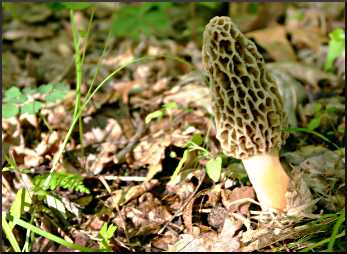
© Beth Gauper
When the snow is gone, the fun begins.
Most of us would be happy to see something, anything, that's green. But there's no reason to wait for that before going outdoors.
Early spring is the best time to hunt for agates on Great Lakes beaches, where winter storms have tossed up a new batch of rocks. If you wait until July, when most tourists arrive, they'll be picked over.
Waterfalls soon will be roaring in north-woods forests, and there's no tree canopy to obscure the views. It's also easiest to spot bald eagles in their nests.
Pasqueflowers pop up on sunny hillsides in April, even before trees bud.
Then May arrives, and nature really lets loose. Morel mushrooms pop up under dead leaves. Warblers migrate north. Spring ephemerals carpet forest floors.
Now is the time to sign up for bird-festival field trips and popular state-park wildflower and morel programs.
Morel hunters should scout for likely spots in late winter, before the ticks come out.
Here's where to find the best of spring, and when to look.
Agates
Lake Superior agates, the Minnesota state gemstone, can be found throughout eastern Minnesota. They're easiest to find in gravel pits and near road construction, but it's more fun to hunt for them on pretty North Shore beaches.
Sunny days are best, either early in the day or late in the afternoon, when rays are slanting across the rocks. But drizzly days can be good, too, because a film of water makes agates glisten, so they're easier to spot.
"The Rock Picker's Guide to Lake Superior's North Shore," available in local gift shops, is very handy. It says one of the best spots to look is the mouth of the Beaver River, just east of Beaver Bay.
For more, see How to find an agate.
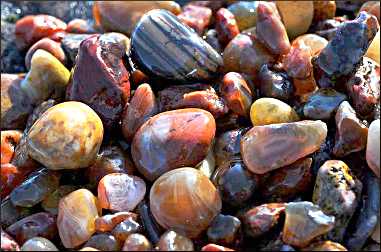
© Chris Polydoroff
Waterfalls
April and May are when you'll see a waterfall at its most ferocious, when rivers are swollen by snow melt. By the time most people are hiking through the forest, in late summer and fall, waterfalls often are shriveled to trickles.
Hop from one roaring waterfall to the next on Minnesota's North Shore — from Gooseberry to the Baptism in Tettegouche State Park to the Cascade and Brule. Just short of the Canadian border, High Falls on the Pigeon River is the Niagara of Minnesota; you'll likely get misted.
For more, see Waterfalls of the North Shore.
In northwest Wisconsin, Big Manitou Falls in Pattison State Park is the highest falls at 165 feet, and the fourth-highest east of the Rockies; see Waterfalls of northern Wisconsin.
Near the Twin Cities, Willow Falls in Wisconsin's Willow River State Park is always spectacular.
Wear shoes that are good for muddy trails. And while you're walking through the forest, watch out for shed antlers along deer trails or where deer have bedded down or browsed in undergrowth, where antlers can become tangled.
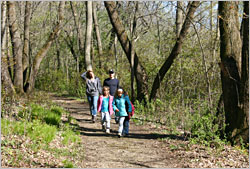
© Beth Gauper
Wildflowers
For photos of the wildflowers you'll be looking for, see our album of spring wildflowers.
If weather is warm, spring ephemerals bloom in late April. The first big display comes from pasqueflowers, a large member of the buttercup family that has a thick, hairy stem and comes in shades of pink and lavender.
One of the best places to see them is on River Terrace Prairie, a scientic and natural area along the Cannon River, on Minnesota 19 east of Cannon Falls. In mid-April, if it's been warm, you'll see thousands of them blooming on a west-facing gravel ridge.
These SNAs — scientific and natural areas in Minnesota, state natural areas in Wisconsin — are run by the state parks but have no amenities. Many have rare wildflowers; for more, see Spring in full glory.
In Minneapolis, spring ephemerals start blooming in Eloise Butler Wildflower Garden by late April if weather is warm, and naturalists lead guided walks.
Jeweled shooting stars are one of the most elegant wildflowers, and Perrot State Park in Trempealeau, Wis., has a stunning display of them in mid-May. In northern Illinois, Starved Rock State Park also has quite a few but is best known for its vast quantities of bluebells.
For more, see Chasing wildflowers.
The earliest ephemerals found in hardwood forests are trout lilies, spring beauties, hepatica, bloodroot, false rue anemone, bellwort, Dutchman's breeches, toothwort, marsh marigolds, wild ginger and Virginia bluebells.
Nerstrand-Big Woods State Park in southeast Minnesota is best-known for them.
You'll see completely different plants on the goat prairies of southeast Minnesota, along the sandy Wisconsin River and in state parks with prairie.
Good parks to look include Wisconsin's Nelson Dewey and Minnesota's Great River Bluffs along the Mississippi and Blue Mounds and Buffalo River in western Minnesota.
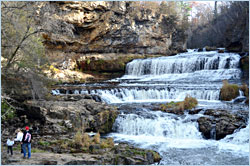
© Beth Gauper
In mid-May, look for pussytoes, hoary puccoon, Indian paintbrush, prairie smoke, blue-eyed grass, wood betony and jeweled and white shooting star.
One of the best goat-prairie displays is Mound Prairie SNA in southeast Minnesota, along Minnesota 16 east of Houston, near the Root River.
Later in May, in the hardwood forests, look for columbine, large-flowered trillium, harebells, blue wood phlox, spiderwort, May apple and wild geranium in the southerly forests, along with lady's-slipper in wetter locations.
For many of the more rare wildflowers, go to Ridges Sanctuary in Door County, where you'll find goldthread, gaywings, dwarf lake iris and bogbean. They should be blooming during the Memorial Day weekend Festival of Nature.
In northern forests and along the shores of Lake Superior and Lake Michigan, everything arrives a little later. In early and mid-June, look for lady's-slipper, bluebead lily, coral root, Labrador tea, hawkweed, bunchberry and wild rose.
Minnesota's North Shore has those and also such rare blooms as butterwort; for more, see Wildflowers of the North Shore.
In north-central Minnesota, Lake Bemidji State Park is one of the best places to see the pink showy lady's slipper, which usually blooms around Father's Day and peaks in late June.
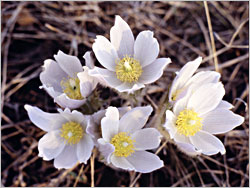
© Torsten Muller
They're found along the park's boardwalk. Other bog plants include dragon's mouth orchid, buckbean, bog rosemary and insect-eating pitcher plants and sundews.
The park holds weekly bog walks in June. For more, see 10 great bog walks.
Birding and festivals
In April and May, migrating birds return the same way they left, along Mississippi River and Great Lakes flyways. On the Mississippi, birders go to Minnesota's Frontenac State Park to see warblers.
Novices without good binoculars can see the tiny birds up close, as they're being banded in demonstrations at bird festivals. The Horicon Marsh Bird Festival in east-central Wisconsin is a good place for that.
People who plan to attend spring bird festivals should sign up early for field trips and for forays with well-known naturalists, especially at the Festival of Birds in Detroit Lakes, Minn., the Chequamegon Bay Birding and Nature Festival out of Ashland, Wis., and the Horicon Marsh festival.
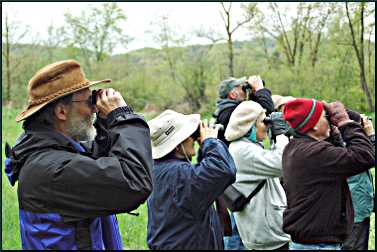
© Torsten Muller
Morel mushrooms
In the southern states, they pop out in March; everyone else has to wait. Watch the message boards at Morels.com ; people love to brag about their finds.
Morels want sun and moisture; in most years, expect them in southern Iowa in mid-April. Then they'll move slowly north, reaching the southern parts of Wisconsin, Minnesota and Michigan by Mother's Day.
If you'd like help looking, sign up for morel programs at Whitewater State Park in southeast Minnesota.
You also can get your fill of morels at festivals in Michigan and Wisconsin. For dates and tips on finding morels, see Searching for morels.
And while you're looking for morels, keep your eyes peeled for watercress, which grows in clear streams, and ramps, a wild leek you can fry up with the morels.